Everything You Need To Know About The 2024 Teahupo’o Olympics
Faster, Higher, Stronger, Together (just not from the channel).
Editor’s note: With July upon us, we’re less than one month away from surfing’s second Olympic foray —and the first, possibly, in pumping surf (thanks, colonialism!). Here’s everything you need to know about Da Gamez in Tahiti.
The new Olympic slogan (see above) was obviously penned by combining Caesar’s earsplitting words in The Planet of the Apes movies — “Apes Together Strong” — with the WSL’s judging criteria which — Speed, Power, Flow.
An undeniable counterfeit, and whilst this shameless plagiarism should be met with a meticulous investigation into the Olympic Committee, it’s refreshing to see that the commons are finally beginning to understand us. Surfing is now the gold standard for peak performance, against which all other disciplines must be measured.
2024 will mark surfing’s second consecutive inclusion into the Games of the Olympiad, which means, my dear friends, that we have rightfully arrived. After many hopeless years sailing the cold and destitute waters that besiege the golden city, we have been declared worthy of entrance into the gates of heaven.
Surfing is now a mainstream mega-sport, and that is something to be taken very, very seriously. As surf fans, it’s our moral duty to show up for the gladiators of our time. We must watch, with cultured and desperately adoring eyes, for the sake of surfing, for the pride of all surfers, and for the very spirit of Aloha.
Here’s a backlog of everything you need to know in order to be a good little surf fan at the 2024 Teahupo’o Olympic Games.
PSA: Apparently, way over in France, other olympic events will also be occurring, such as running races, trampoline bouncing, and horse dressage. But we’re gonna focus our attention on the big business going down in Tahiti.
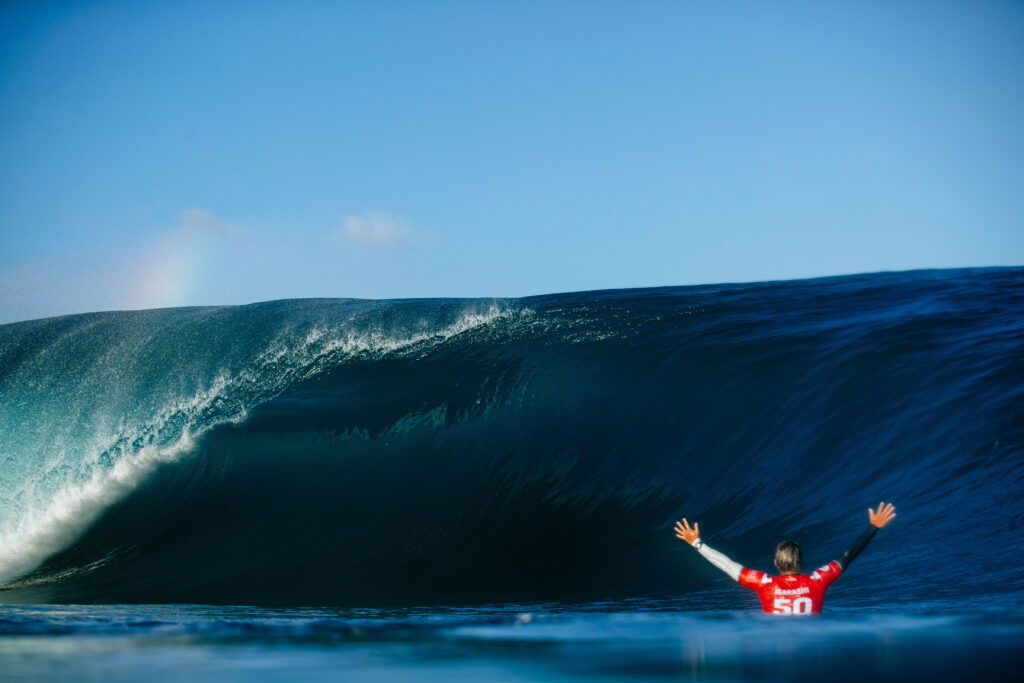
Who‘s competing?
24 women and 24 men will dig for gold at The End of the Road, which is eight more surfers than in 2020. The event will feature a spattering collection of world tour vets hailing from renowned surfing nations, as well as a few unexpected mavericks from landlocked countries. Here’s the full list of competitors:
MEN
- Conor O’Leary (JPN)
- Kanoa Igarashi (JPN)
- Reo Inaba (JPN)
- Filipe Toledo (BRA)
- João Chianca (BRA)
- Gabriel Medina (BRA)
- Jordy Smith (RSA)
- Matthew McGillivray (RSA)
- Griffin Colapinto (USA)
- John John Florence (USA)
- Ethan Ewing (AUS)
- Jack Robinson (AUS)
- Kauli Vaast (FRA)
- Joan Duru (FRA)
- Lucca Messina (PER)
- Alonso Correa (PER)
- Rio Waida (IDN)
- Billy Stairmand (NZL)
- Leonardo Fioravanti (ITA)
- Alan Cleland Jr. (MEX)
- Andy Criere (ESP)
- Ramzi Boukhaim (MOR)
- Tim Elter (GER)
- Bryan Perez (ESA)
WOMEN
- Vahine Fierro (FRA)
- Johanne Delay (FRA)
- Nadia Erostarbe (ESP)
- Janire Etxabarri (ESP)
- Tatiana Weston-Webb (BRA)
- Tainà Hinckel (BRA)
- Luana Silva (BRA)
- Carissa Moore (USA)
- Caroline Marks (USA)
- Caity Simmers (USA)
- Molly Picklum (AUS)
- Tyler Wright (AUS)
- Siqi Yang (CHN)
- Camilla Kemp (GER)
- Chino Matsuda (JPN
- Teresa Bonvalot (POR)
- Brisa Hennessy (CRC)
- Saffi Vette (NZL)
- Sanoa Dempfle-Olin (CAN)
- Sol Aguirre (PER)
- Yolanda Hopkins Sequeira (POR)
- Anat Leilor (ISR)
- Candelaria Resano (NCA)
- Sarah Baum (RSA)
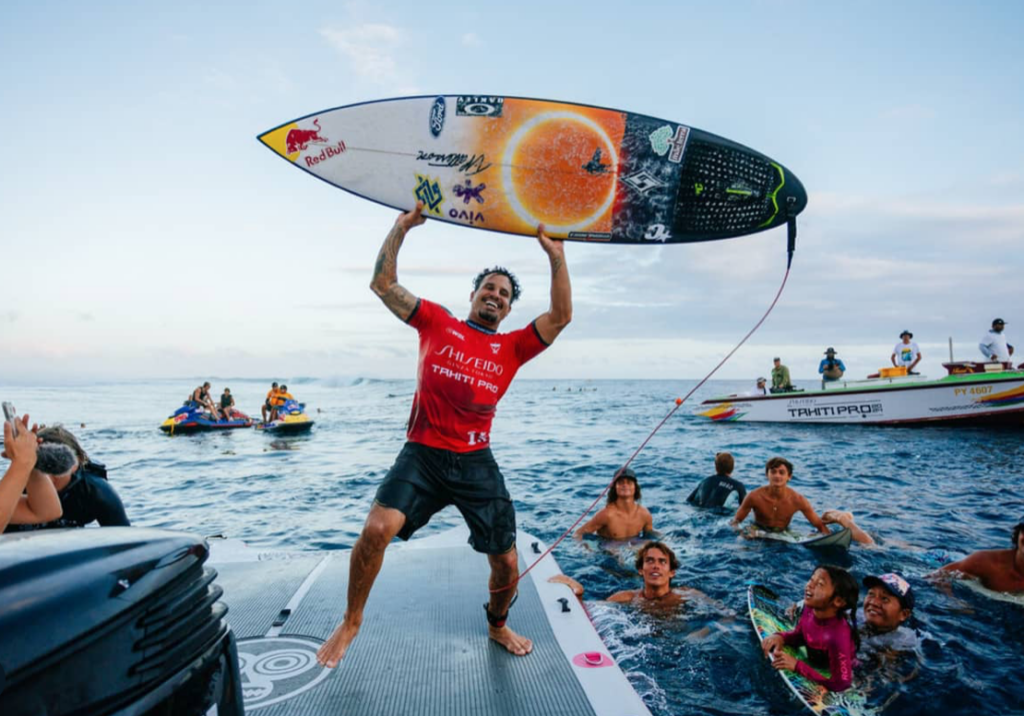
How did they qualify?
When beings of the future look back and contemplate the pinnacle of human engineering and technological prowess, they will consider the qualification process for the 2024 Paris Surfing Olympics to be among the Anthropocene’s most intricate mathematical equations. But please, do read on, and we will wander through the art gallery together, brows furrowed, as we pretend to understand what it is that we’re looking at.
Here’s a boxed-up overview of how the surfers were selected:
- 2023 WSL Championship Tour (8 women, 10 men)
- 2023 ISA World Surfing Games (4 women, 4 men)
- 2023 Pan American Games (1 woman, 1 man)
- 2024 ISA World Surfing Games (7 women, 5 men)
- 2022 ISA World Surfing Games (1 woman, 1 man)
- Host country quota (1 woman, 1 man)
- Universality quota (1 woman, 1 man)
Each qualifying country was entitled to send a maximum of four competitors — two women and two men. France, being the host country, was granted two additional surfers, and the winning nations at the 2022 & 2024 ISA World Surfing Games were also given an additional spot. On the men’s side, Japan (2022) and Brazil (2024) were victorious, so they added Reo Inaba and Gabby Medina to the Draw. USA (2022) and Brazil (2024) won the women’s comps, so they’re sending over Caity Simmers and Taina Hinckel.
The two universality positions were awarded to countries typically underrepresented at the Olympic Games, and are designed to increase the diversity of participating nations. The ISA chose El-Salvador and Nicaragua, who will send over Bryan Perez and Candelaria Resano, respectively.
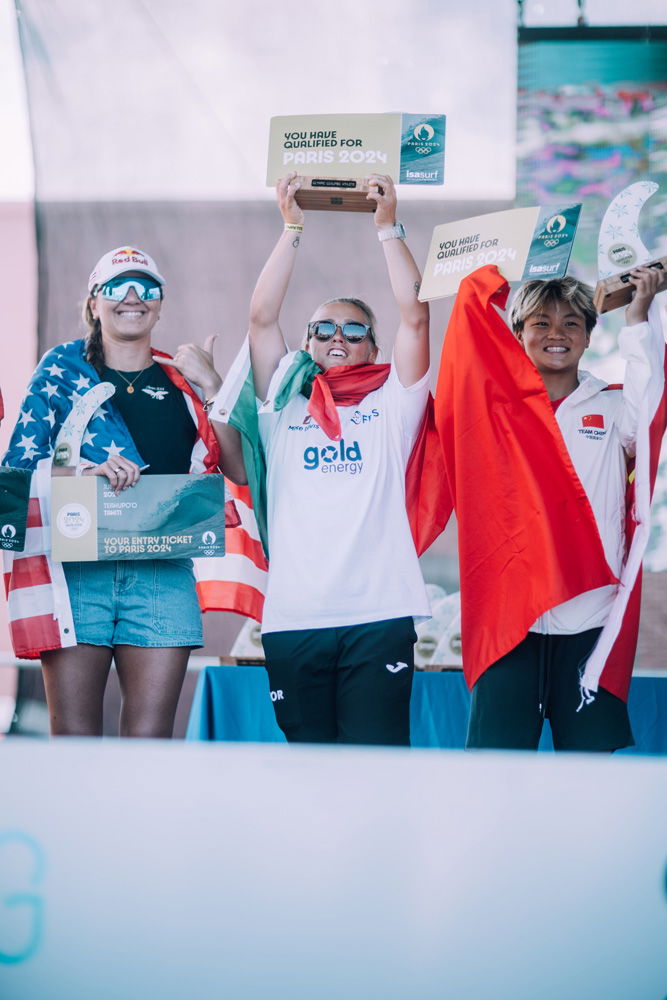
Event format
The event will take the shape of a typical competitive surfing template, comprising three initial rounds, a quarterfinal, then a semi, and then a final.
The path through the first stages of the draw mimics the structure of a men’s post-cut Wozzle comp. The first round will consist of eight heats, with three surfers in each. Winners leapfrog through to the Round of 16, whilst the losers are relegated to a sudden death surf-off. Losers get the noose, winners progress to R16. Surfer-on-surfer heats from then on out.
All competitors who make it to the semis will surf for glitz and glamour. The final determines silver and gold, whilst the two surfers who flounder the semis will lock horns for bronze. No room on the podium for a fourth place finish, as Gab Medina knows from Japan, 2021.
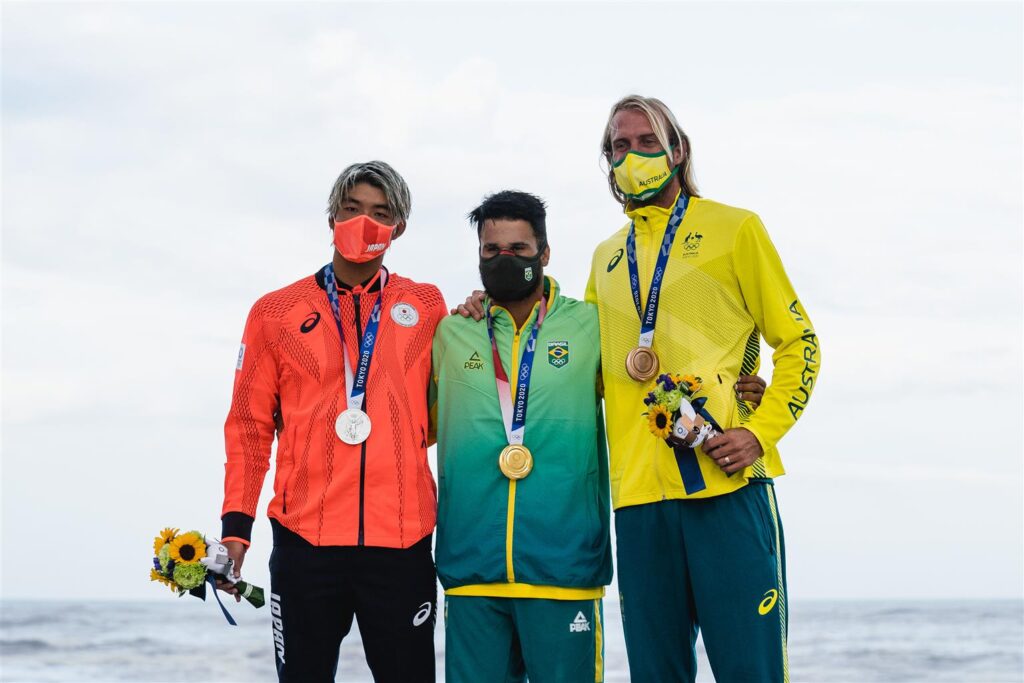
Heat draw
The Olympic seeding was determined by the results of the 2024 ISA World Surfing Games in Puerto Rico, without considering CT rankings, prior success or experience level. For that reason, we’ll be treated to a round-one riot featuring Molly Picklum, Caity Simmers, and Tati West who, only recently, air-dropped into a 10-point corpse-hunter at Teahupo’o, during one of the most exciting heats in surfing history. If you’re gonna zone into a single heat of the entire comp, let it be heat-four on the women’s side of the draw.
WOMEN
- Heat 1: Yolanda Hopkins (POR), Caroline Marks (USA), Sarah Baum (RSA)
- Heat 2: Sol Aguirre (PER), Janire Etxabarri (ESP), Vahine Fierro (FRA)
- Heat 3: Anat Lelior (ISR), Sanoa Dempfle-Olin (CAN), Tyler Wright (AUS)
- Heat 4: Tatiana Weston-Webb (BRA), Molly Picklum (AUS), Caitlin Simmers (USA)
- Heat 5: Johanne Defay (FRA), Brisa Hennessy (CRC), Candelaria Resano (NCA)
- Heat 6: Tainá Hinckel (BRA), Camila Kemp (GER), Luana Silva (BRA)
- Heat 7: Nadia Erostarbe (ESP), Siqi Yang (CHN), Saffi Vette (NZL)
- Heat 8: Carissa Moore (USA), Teresa Bonvalot (POR), Matsuda Shino (JPN)
MEN
- Heat 1: Ethan Ewing (AUS), Tim Elter (GER), Jordy Smith (RSA)
- Heat 2: Joan Duru (FRA), Jack Robinson (AUS), Matthew McGillivray (RSA)
- Heat 3: Alonso Correa (PER), Filipe Toledo (BRA), Kanoa Igarashi (JPN)
- Heat 4: Gabriel Medina (BRA), Connor O’Leary (JPN), Bryan Perez (ESA)
- Heat 5: Ramzi Boukhiam (MAR), Billy Stairmand (NZL), João Chianca (BRA)
- Heat 6: Andy Criere (ESP), John John Florence (USA), Alan Cleland (MAR)
- Heat 7: Kauli Vaast (FRA), Lucca Mesinas (PER), Griffin Colapinto (USA)
- Heat 8: Rio Waida (INA), Leonardo Fioravanti (ITA), Inaba Reo (JPN)
Why is a tiny Pacific island hosting an event at the Paris Olympics?
Uh… hi there, colonialism. Welcome to the party, I guess.
In 1842, after a flaming quarrel with French missionaries permeating the good word of Christ, and following the arrival of an op’d European warship, the chiefs resentfully ceded sovereignty to France. Tahiti, from then on, was administered as The French Colony of Oceania.
The next century was spent under the boot of the French. In 1958, radical politician Pouvanaa a Oopa took a spirited swing at establishing an Independent Tahitian Republic, for which he was subsequently cuffed and jailed for eight years, before being exiled to France for 15 years. The movement collapsed.
Then, in 1984, the territory finally became autonomous, and in 2003, France changed the classification of French Polynesia from an Overseas Territory to an Overseas Collectivity.
Après la pluie, le beau temps.

So, it was either send em’ to Teahupo’o, or embark on a protracted 10-day search for swell and sand across the French beachies. In the pits of summer, no less, which ain’t really the season for waves in France (just ask Sage Erickson). If you happened to have tuned into Stab Highway Europe last year, you’d know this well. Excessive good times; less than inspiring undulation.
Teahupo’o, on the other hand, gets smacked with south swells from April through September, and happens to be one of the greatest surfing arenas on the planet. Easy choice for the decision-making overlords.
The official Olympic Website describes Teahupo’o as, “Iconic, heavy and extreme,” and, more importantly, includes a vivid paragraph explaining the shooting of the curl.
“Barrel riding (also known as tube riding) is arguably the holy grail of surfing. It involves a surfer getting inside the most critical part of the wave and riding through the tube, with the goal of being spit out the other side. This glassy image of a circular blue ocean wall is what comes to mind when most surfers think of Teahupo’o.”
Can’t get no circular blue ocean walls in the City of Love.
New tower drama
Curiously, concerns have been raised over a gigantic aluminium judging tower being blasted into the coral of one of the world’s last remaining live-reef systems.
Now, the Olympic Games have a reputation for leaving behind breathtaking and impressively expensive dwellings that have no purpose other than to house athletes and showcase niche sporting events for a period of 10 days, before being abandoned to the rats for the rest of time.
The Olympic Committee’s announcement to replace the decades old, ramshackle yet deeply loveable wooden tower with a luxurious modern upgrade, built specifically for the olympics, was met with outrage and fervent petitioning from locals, olympic surfers, and environmentalists across the globe.
Surfers weren’t having it and, to an extent, their protesting worked. A new tower was still constructed, but its size was significantly reduced, its location was moved to a flat reef shelf with less coral, and it’s completely collapsible, so it won’t be abandoned to the rats. Or, rather, the fish.
Small win for the people, big one for the turtles. And frankly, this new version probably has a lot of necessary/modern upgrades that will serve all current and future events in Tahiti.
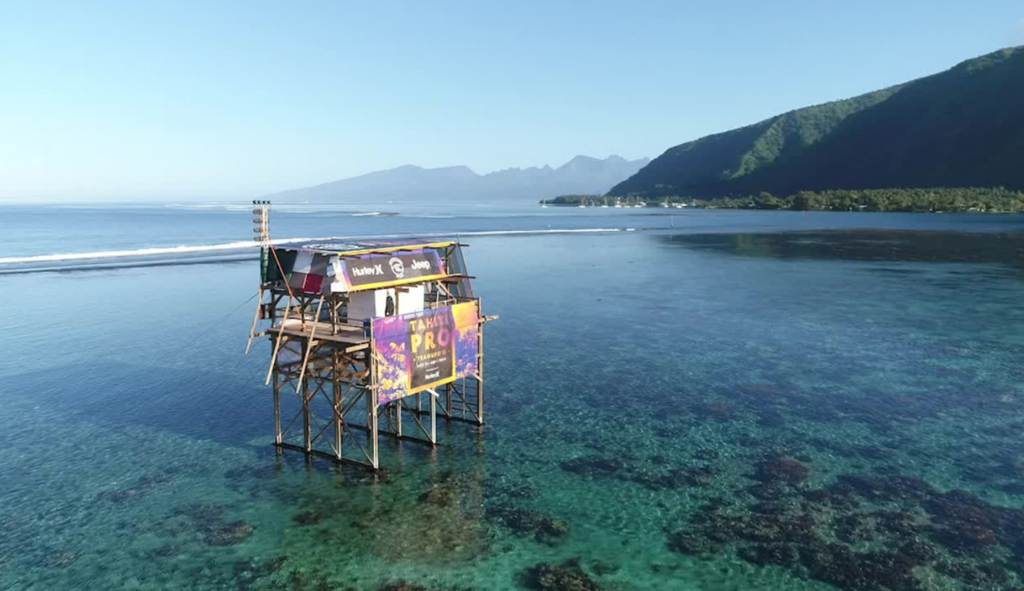
Run dates
The Olympic Games will run between the 27th of July and the 5th of August, allowing for a 10-day competition window. Elite minds on the ground will decide upon the best four-or-so days to run the event.
How to watch
Yes, devoted surf fan, you absolutely can.
For Australian viewers, the Nine Network will air the games across 40 free-to-air channels. For those with cash to burn, Stan Sport will also be showcasing every event.
If you’re in the States, NBC has snagged the broadcasting rights to the games. Coverage will be spread across the Peacock TV channels, which sounds super colourful and fun.
For Europe, BBC has the goods.
How Not To Watch
In Tahiti. Nobody’s allowed to spectate from the channel. Tough potatoes.
Who’s commentating?
In what will likely be the most important four days of his media career, esteemed comedian Colin Jost will travel to Tahiti to report live on Olympic surfing for NBC. Jost, who’s a regular fixture on the mildly popular and relatively underground American television program Saturday Night live, will be tasked with interviewing athletes, ‘previewing the waves,’ and generally being the eyes and ears of the people watching at home.
The celebrated funnyman will fill the sideline reporter role typically assumed by figures such as Laura Enever, Dimity Stoyle, and Rosie Hodge — all of whom have faced criticism in the past from middle-aged, internet-dwelling men, for occasionally stumbling on the mic. Jost is of modest surfing ability and assumedly lacks the expert knowledge of the three gals previously mentioned, but he is a media big-dog. Having a professional comedian report live as people get folded in half by Teahupo’o will be an interesting experiment, if nothing else.
If the rumours are true, Chris Cotè and Barton Lynch will round out the Olympic Broadcasting Service in France, whilst Joe Turpel and Michael Parsons will anchor the play-by-play from a remote office in the US.
The A-team has been assembled.
Should we all get Olympic rings as tattoos?
If you truly stood in solidarity with the surfing community, then your chest would already be permanently decorated with the five sacred circles. See below for neck-area inspiration:














Comments
Comments are a Stab Premium feature. Gotta join to talk shop.
Already a member? Sign In
Want to join? Sign Up